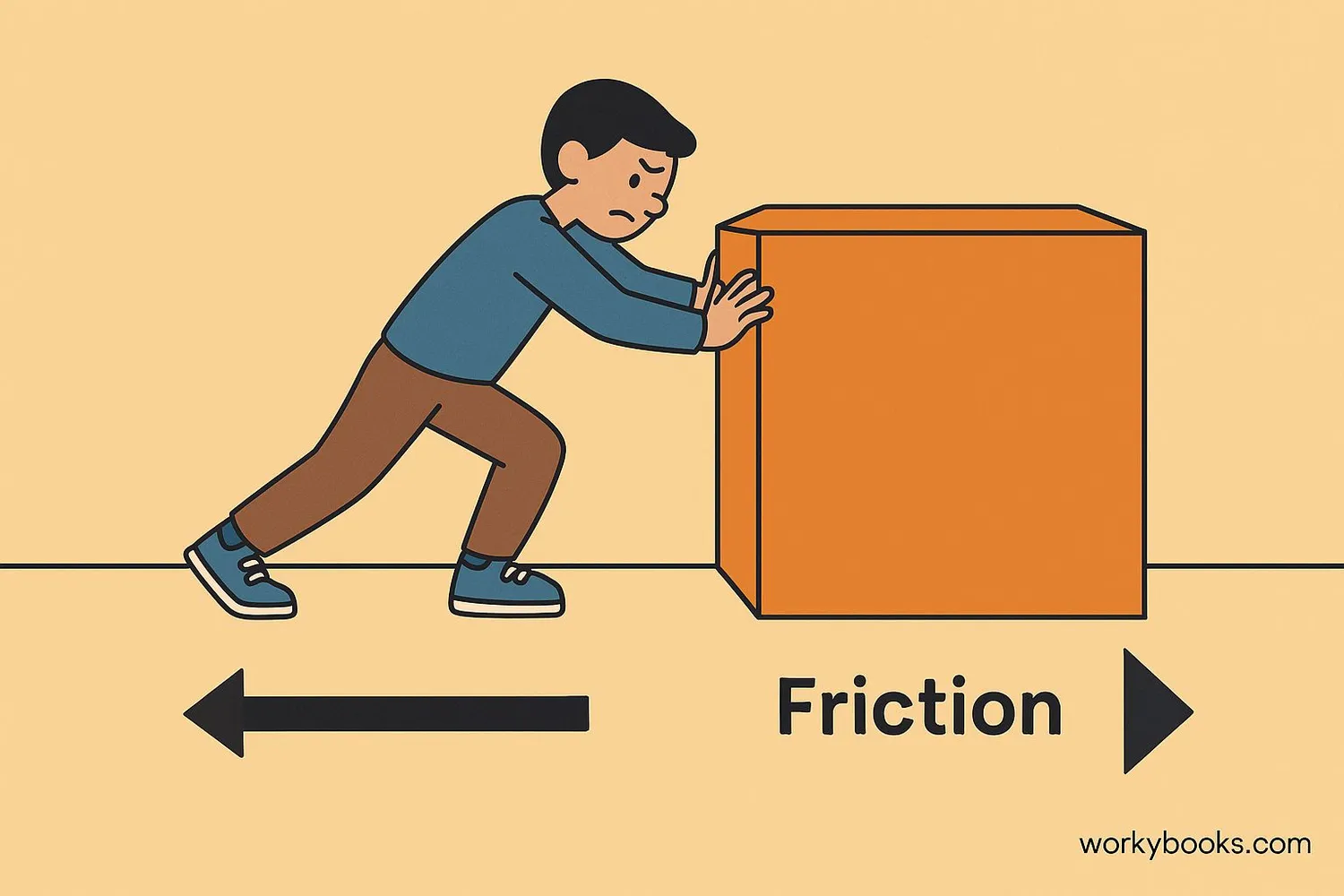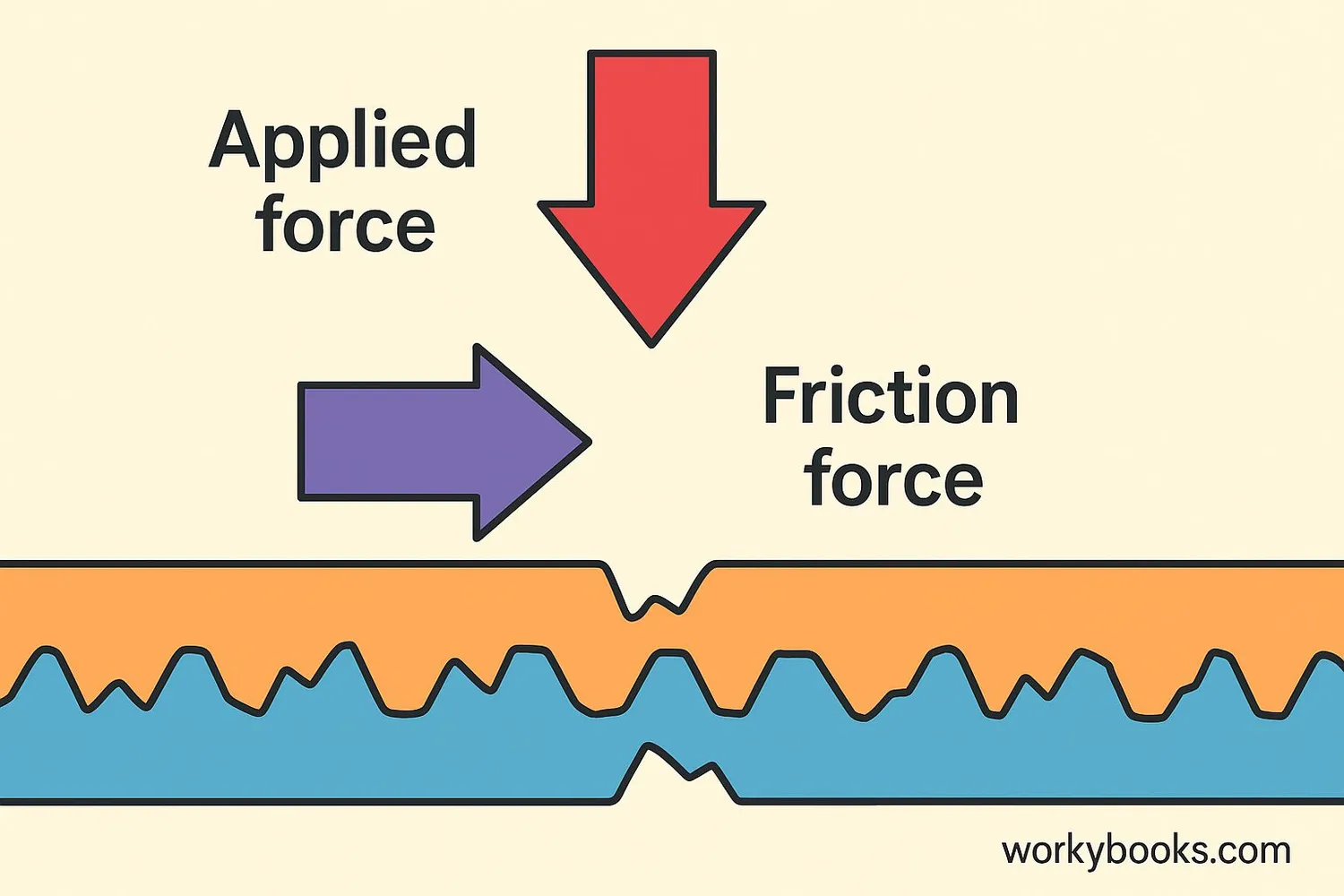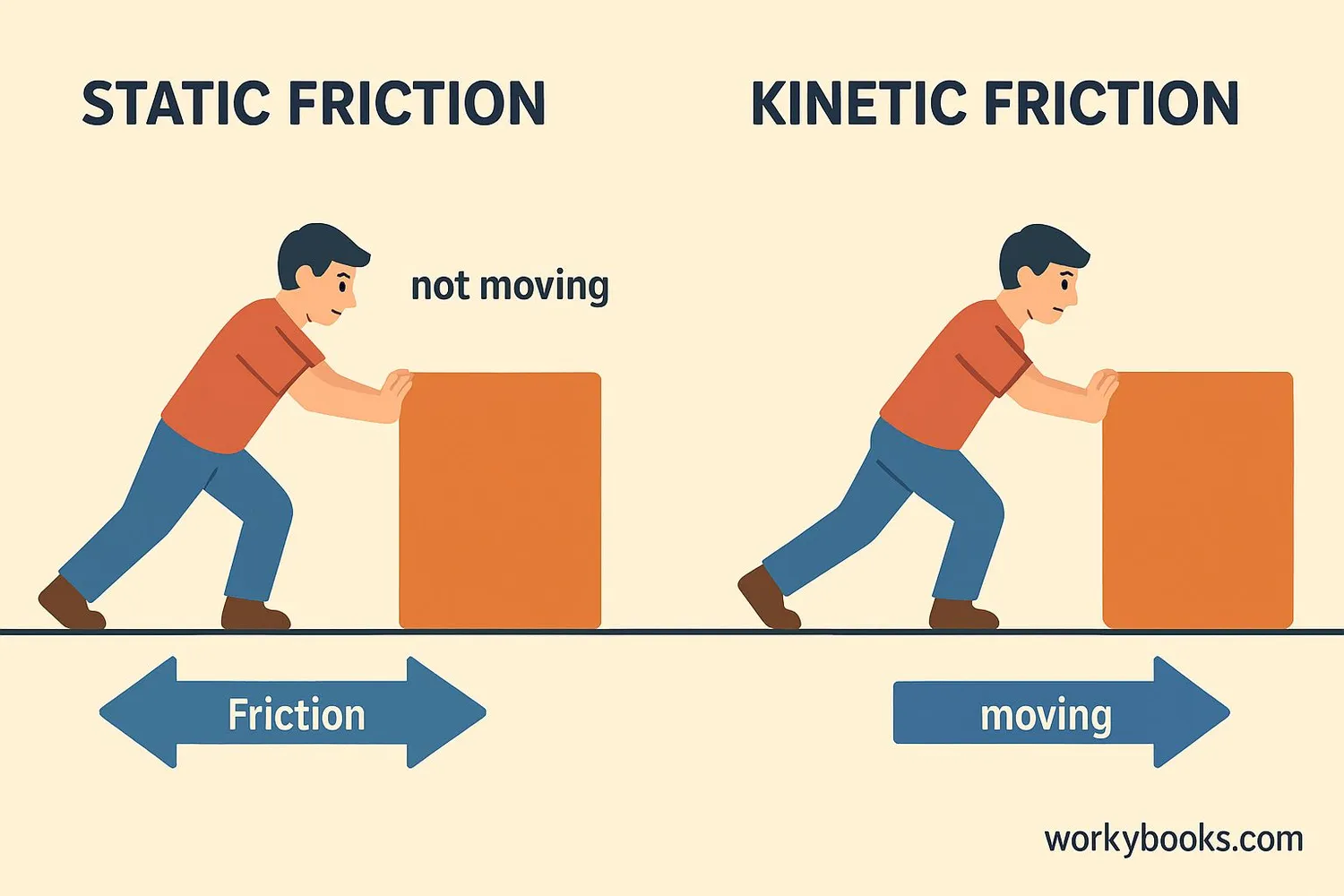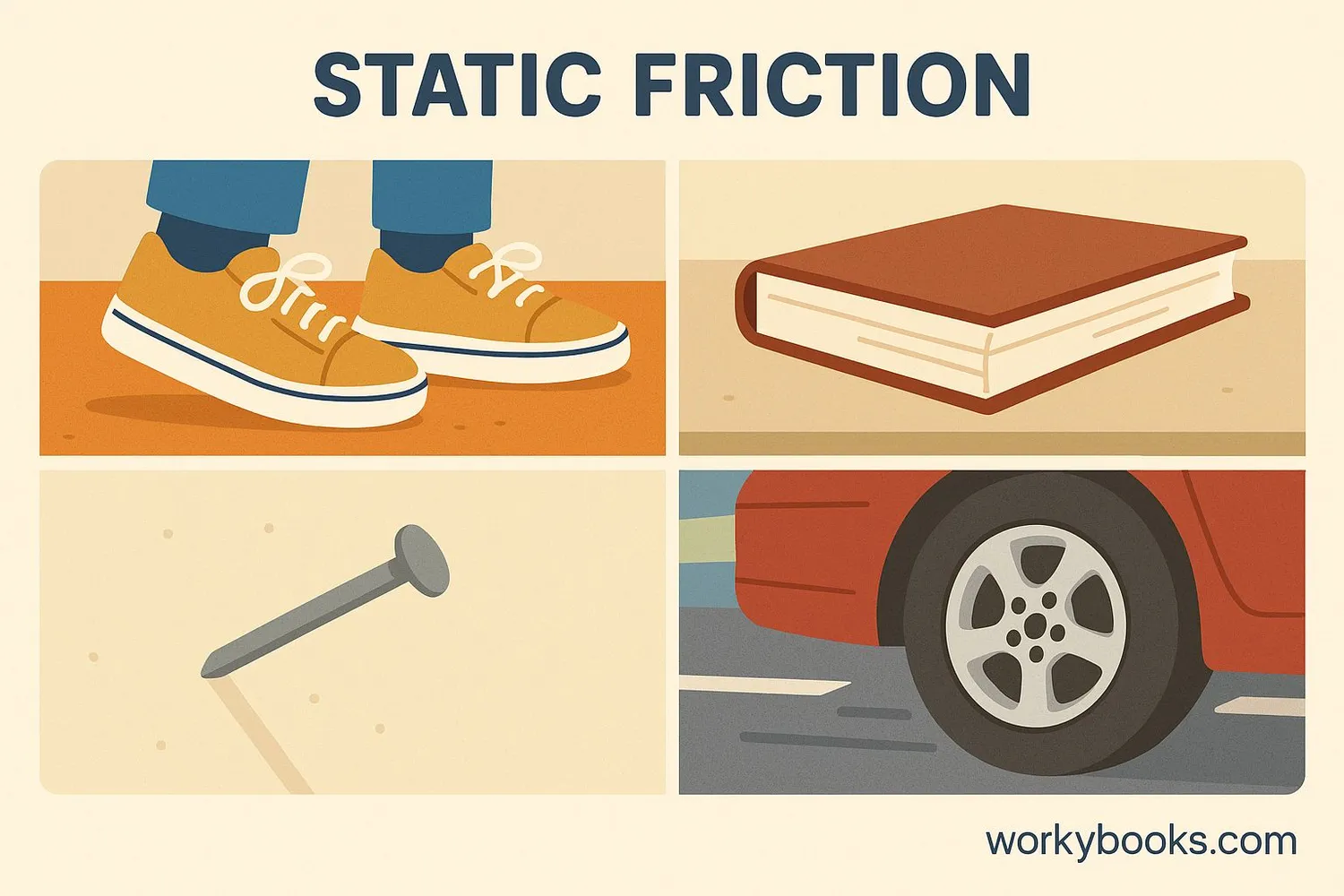Static Friction - Definition, Examples, Quiz, FAQ, Trivia
Discover how friction keeps objects from moving when pushed!
What is Static Friction?

Static friction is the force that keeps objects from moving when you push or pull on them. It's what makes it hard to start moving something that's standing still!
Think of trying to push a heavy box across the floor. At first, it doesn't move no matter how hard you push. That's static friction working! It's the invisible grip between surfaces that stops things from sliding.
Static friction happens because all surfaces, even ones that look smooth, have tiny bumps and ridges. These microscopic imperfections interlock when two surfaces touch, creating resistance to movement.
Science Fact!
Static friction is usually stronger than kinetic (sliding) friction. It takes more force to start something moving than to keep it moving!
How Static Friction Works

Static friction works through two main factors: the nature of the surfaces and how hard they're pressed together.
Surface Texture
Rougher surfaces have more friction than smooth ones
Normal Force
Heavier objects pressed down harder create more friction
Materials
Some materials (like rubber) naturally have more friction
The strength of static friction can be calculated using this formula:
Where:
• fₛ = static friction force
• μₛ = coefficient of static friction (a number that depends on the materials)
• N = normal force (how hard surfaces are pressed together)
The "≤" symbol means static friction can increase up to a maximum value, but not beyond it. Once you apply enough force to overcome this maximum, the object starts moving!
Friction Coefficient
The coefficient of static friction (μₛ) is usually between 0 and 1. Rubber on concrete has a high coefficient (around 0.9), while ice on ice has a very low coefficient (around 0.03).
Static vs Kinetic Friction

There are two main types of friction: static friction and kinetic friction. Understanding the difference helps explain why it's harder to start moving something than to keep it moving.
Static Friction
Acts on objects that are not moving
Stronger force
Prevents motion from starting
Kinetic Friction
Acts on objects that are moving
Weaker force
Slows down moving objects
The key difference is that static friction is usually greater than kinetic friction. This means:
• You need more force to start moving something than to keep it moving
• Once an object starts moving, it's easier to keep it moving
• This is why you might jerk a stuck object to get it moving instead of pushing steadily
Real World Example
When trying to push a car that's stopped, you need several people to get it moving. But once it's rolling, one person can keep it moving easily!
Static Friction Examples

Static friction is all around us! Here are some common examples you encounter every day:
Walking
Static friction between your shoes and the ground prevents slipping
Objects on Surfaces
Books stay on desks, plates on tables due to static friction
Car Tires
Static friction between tires and road allows cars to accelerate without slipping
More examples of static friction:
• Nails in walls - Static friction holds them in place
• Brakes on wheels - When not moving, static friction keeps vehicles from rolling
• Writing with pencils - Static friction between paper and graphite creates marks
• Rubber on floors - Mats don't slide because of static friction
• Clothing - Buttons stay buttoned due to static friction
Try This Experiment
Place a book on a slightly tilted board. Gradually increase the tilt. The book stays put at first (static friction), then starts sliding (kinetic friction takes over).
Static Friction Quiz
Test your knowledge with this static friction quiz! Answer all 5 questions to see how much you've learned.
Frequently Asked Questions
Here are answers to some common questions about static friction:
Interesting Static Friction Facts
Discover some amazing facts about static friction!
Gecko Gravity-Defiers
Geckos can walk upside down on ceilings thanks to incredibly strong static friction! Their feet have millions of tiny hairs that create molecular attraction with surfaces.
Sports Science
Baseball players rough up their gloves to increase static friction for better ball control. Similarly, gymnasts use chalk to increase friction for a better grip on equipment.
Engineering Marvel
The world's largest friction clamp can hold over 500 tons! It uses the principles of static friction to secure massive structures in construction and engineering projects.
Ancient Understanding
The ancient Egyptians understood static friction! They poured water in front of sleds carrying heavy stones to reduce friction, making it easier to move massive blocks for pyramids.


